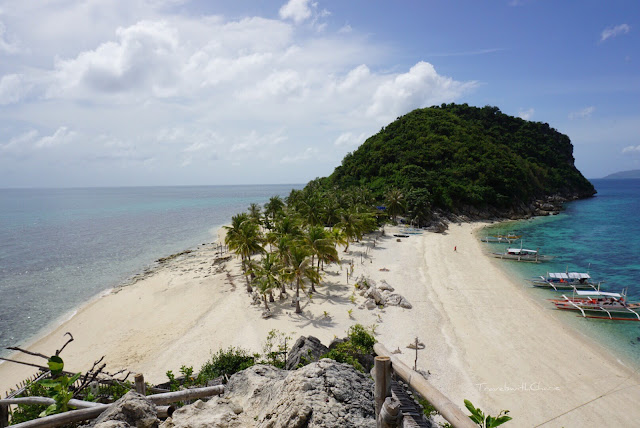This trip to Islas de Gigantes sat long on the planning stage. But one fine day in October, we finally made it there. And it was everything I had heard and read about. The image above shows our approach to Cabugao Gamay Island.
This is the hue of the sea taken from Cabugao Gamay. How it nurtures the blue mind!
Cabugao Gamay
This is the iconic photo of Islas de Gigantes. We scrambled up a hill to get this unobstructed view of Cabugao Gamay and the Visayan Sea. It's a good thing we arrived early in the morning before the selfie crowd got in.This is the hue of the sea taken from Cabugao Gamay. How it nurtures the blue mind!
Cabugao Gamay
The white sand beach of Cabugao Gamay is free from debris.
Bantigue Island
Bantigue Island and its sandbar rises from the sea like a mirage. We stopped here for lunch of rice and fish.
Saltwater Lagoon
The Tangke Saltwater Lagoon on Gigantes Sur is surrounded by towering limestone cliffs. It was still low tide when we got there.
Carles Port
Scallops are only one peso each. But at Bancal Port in Carles, you can buy them by the bucket. And it is so succulent.
How to get there:
The closest gateway to Islas de Gigantes is Roxas City which is only an hour away from Bancal Port in Carles. There are passenger vans and buses leaving from the Punta Dulog Terminal in Roxas City to Balasan and connect by jeepney from there to Carles. From Carles, you take a boat or private motorized outrigger to the islands. Total travel time from Roxas City is approximately one hour and from Carles to Cabugao Gamay is about 45 minutes.
It takes approximately four hours by bus from Tagbak Terminal in Jaro, Iloilo to Carles.
Roxas City and Santa Barbara in Iloilo are served by both Cebu Pacific and Philippine Airlines.
Where to buy your ticket:
Pick up your ticket for the boat ride to the islands from the Municipal Tourism Office in Carles on Bancal Port. You also have to pay the environmental fee of P75.00. Purchase of ticket doesn't necessarily include entry to Tangke Saltwater Lagoon. For more information you may contact the office at tourismcarles@yahoo.com or call/text 09101249946.
We hired a private motorized outrigger through the Tourism Office since we were a group of five. It was nice to be able to decide which islands to visit. And the senior boatman was our guide and stayed with us until we got back to Bancal Port. The fare was P3500.00. Fare varies by group size.
*****
Images by TravelswithCharie







Comments